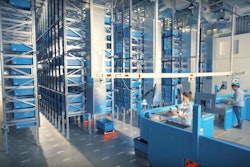
It’s no surprise that the future of U.S. manufacturing is likely to be characterized by far fewer employees. The shrinkage has been going on for years, as higher value-added manufacturing processes have become increasingly automated and the current Coronavirus disease (COVID-19) pandemic has accelerated this trend.
To the consumer, the labor savings that come with automation are the focus, but that’s not the whole story. The real drivers of automation are quality and speed. Simply put, smart machines do a better job of making more things than humans do. And, manufacturing companies in the forefront of this inexorable shift to Industrial Internet of Things (IIoT), starting with machine health and performance, will reap the benefits in terms of predictability, reliability and scheduling flexibility. Those benefits, in turn, will translate into better products, greater customer satisfaction and improved financial performance.
The other trend is the reshoring of U.S. manufacturing. For decades, the trend has been the opposite as manufacturing jobs left the United States due a number of economic factors, most of them cost-related due to lower wage rates outside the United States. COVID-19 has exposed the challenges that non-U.S. manufacturing has on U.S. consumers, which continue to experience shortages and higher prices. Automating manufacturing in the United States can significantly lower those costs accelerating the return to manufacturing products in this country.
Here are a few of the benefits that will accrue to those in the forefront of the march to increasingly automated manufacturing through machine health:
Maximized output
The ability to continuously monitor machine health remotely transforms traditional concepts of downtime, scheduling and maintenance. For instance, instead of regularly scheduled, but costly, maintenance shutdowns that have been necessary to prevent even more costly equipment failures, manufacturing equipment can be monitored in real time. Advanced sensors detect when a piece of equipment starts to operate sub-optimally, which not only enables more precise maintenance and repairs, but helps operators improve machine performance and maximize output through more intense scheduling of “healthy” machinery.
Reduced scrap
When you have clear visibility into machine health and performance, you can ensure that your machines are operating at maximum efficiency. It often goes without saying, but efficiently running machines have higher quality output and generate less waste. This results in less capital tied up in inventory and spare parts, and less need to provide make goods or do time-consuming quality testing through sampling.
Minimized risk of disruption
Industrial manufacturers operating with machines in good condition experience fewer instances of unplanned downtime and are less prone to disruption. This increases the resiliency of their supply chains. This enhanced reliability makes such companies not only a more valued supplier, but also one more likely to attract business from competitors.
Improved worker efficiency and satisfaction
Worker productivity and morale increases as less time is spent on catastrophic break downs and team efforts shift more toward prevention. Providing your reliability and maintenance teams with the tools they need to perform at their best creates a culture that rewards being proactive not reactive. Additionally, with advanced machine health insights, less time is wasted on unnecessary/routine inspections that at best only catch a fraction of the failures and at worst, can actually cause breakdowns.
Monitoring machine health will result in lower costs, improved supply chain resilience and responsiveness as well as higher consumer delight. The social challenges that arise from a manufacturing sector will demand even more consideration and action by private and public groups, as manufacturing becomes more automated. Challenges aside, however, the future for companies that can manufacture better products more efficiently never looked brighter.




















